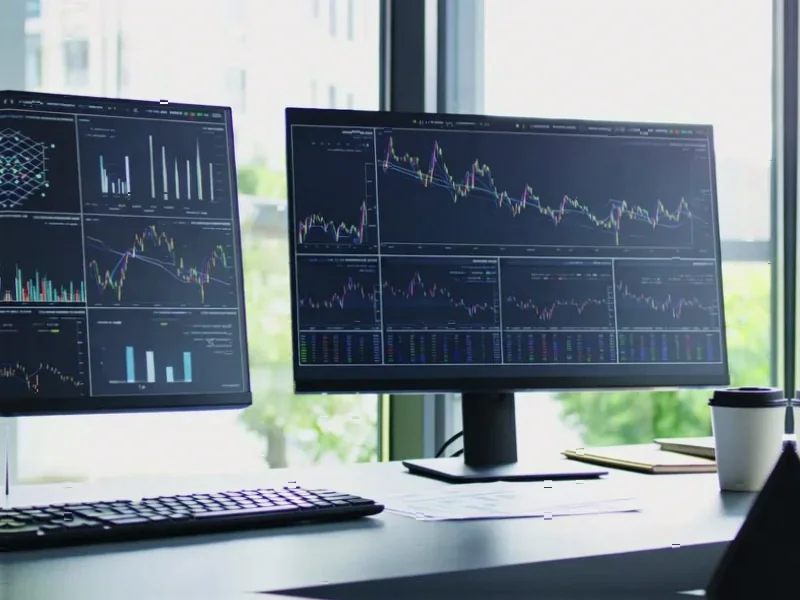According to Financial Times News, US stocks reached their 36th record high of the year despite 397 S&P 500 constituents declining, marking the first time in 35 years the index has gained on a day with so many losers. The concentration has become extreme, with eight tech companies accounting for 36% of the entire US market value, 60% of gains since April’s market bottom, and nearly 80% of the S&P 500’s net income growth. Nvidia recently became the world’s first $5 trillion company, while Microsoft surpassed $4 trillion after finalizing its OpenAI partnership. The AI investment boom is driving massive capital expenditure, with Google, Amazon, Meta and Microsoft planning to spend over $400 billion on data centers in 2026 alone. This unprecedented market concentration raises critical questions about sustainability and risk.
Table of Contents
Historical Parallels and Critical Differences
What we’re witnessing bears striking resemblance to the dotcom bubble, but with several crucial distinctions. During the 1999 tech mania, many high-flying companies had little more than PowerPoint presentations and bold visions. Today’s AI leaders have something the dotcom darlings largely lacked: massive, established revenue streams and proven business models. Companies like Meta Platforms and Alphabet Inc. generate billions in cash flow from their core advertising businesses, while Nvidia dominates the AI chip market with tangible products and extraordinary profit margins. However, the current valuation metrics are even more stretched than during the dotcom peak, with the market’s price-to-sales ratio exceeding 1999 levels and total market capitalization reaching 225% of GDP compared to the historical average of 85%.
The Hidden Dangers of Extreme Concentration
While some analysts argue that concentration in “big, stable, diversified companies” reduces risk, this perspective overlooks systemic vulnerabilities. The S&P 500 Index has become a proxy for betting on a handful of tech giants rather than a diversified basket of American businesses. This creates multiple hidden risks: liquidity concentration where massive institutional flows into the same few stocks create artificial price support, correlation breakdown where traditional diversification fails, and crowding risk where everyone is positioned in the same direction. More concerning is what happens when the AI investment cycle matures – if returns don’t materialize as expected, the simultaneous unwinding of these concentrated positions could trigger a cascade effect across global markets.
The AI Capex Conundrum
The staggering $400+ billion in planned data center investments represents one of the largest capital reallocations in modern history, but it’s fundamentally different from previous infrastructure booms. Unlike the telecom build-out of the late 1990s where companies borrowed heavily, today’s tech giants are largely self-funding their expansions – for now. However, we’re already seeing cracks in this narrative with Meta’s planned $25 billion bond sale and Oracle’s $18 billion debt offering. The critical question isn’t whether these companies can afford the spending, but whether they can generate sufficient returns on this unprecedented capital deployment. History suggests that when everyone invests in the same technology simultaneously, returns tend to disappoint as capacity outstrips demand and competition intensifies.
Navigating the AI Investment Landscape
For investors, this environment creates a classic “damned if you do, damned if you don’t” scenario. Avoiding the AI leaders means potentially missing substantial gains as momentum continues, while chasing current valuations risks significant capital impairment when the cycle turns. The most prudent approach may involve focusing on companies with sustainable competitive advantages beyond just AI hype, reasonable valuations relative to cash flow, and diversified revenue streams that aren’t entirely dependent on AI adoption timelines. Additionally, investors should monitor key indicators like corporate bond issuance for AI projects, cloud revenue growth rates, and enterprise adoption metrics rather than getting swept up in the euphoric narrative.
The Regulatory Overhang
One factor conspicuously absent from most discussions is the growing regulatory scrutiny facing these tech behemoths. As their market dominance becomes more extreme, antitrust enforcement becomes increasingly likely. We’ve already seen preliminary actions in Europe and the US, but the current AI gold rush could accelerate regulatory responses. If history is any guide, when companies become too dominant and their influence too pervasive, political and regulatory backlash inevitably follows. This represents a significant unquantified risk that could dramatically impact future growth trajectories and valuation multiples for the very companies driving today’s market performance.
Pathways to Sustainable Growth
The ultimate test for this AI-driven market will be whether the technology delivers transformative productivity gains across the broader economy. Thus far, the benefits have been concentrated within the tech sector itself, creating a self-reinforcing but potentially fragile ecosystem. For sustainable growth to emerge, we need to see AI adoption driving meaningful efficiency improvements and revenue growth across healthcare, manufacturing, financial services, and other traditional sectors. The current market structure suggests investors are betting heavily on this broad-based adoption materializing quickly, but the historical record for technology diffusion suggests the process may be slower and more uneven than current valuations imply.



